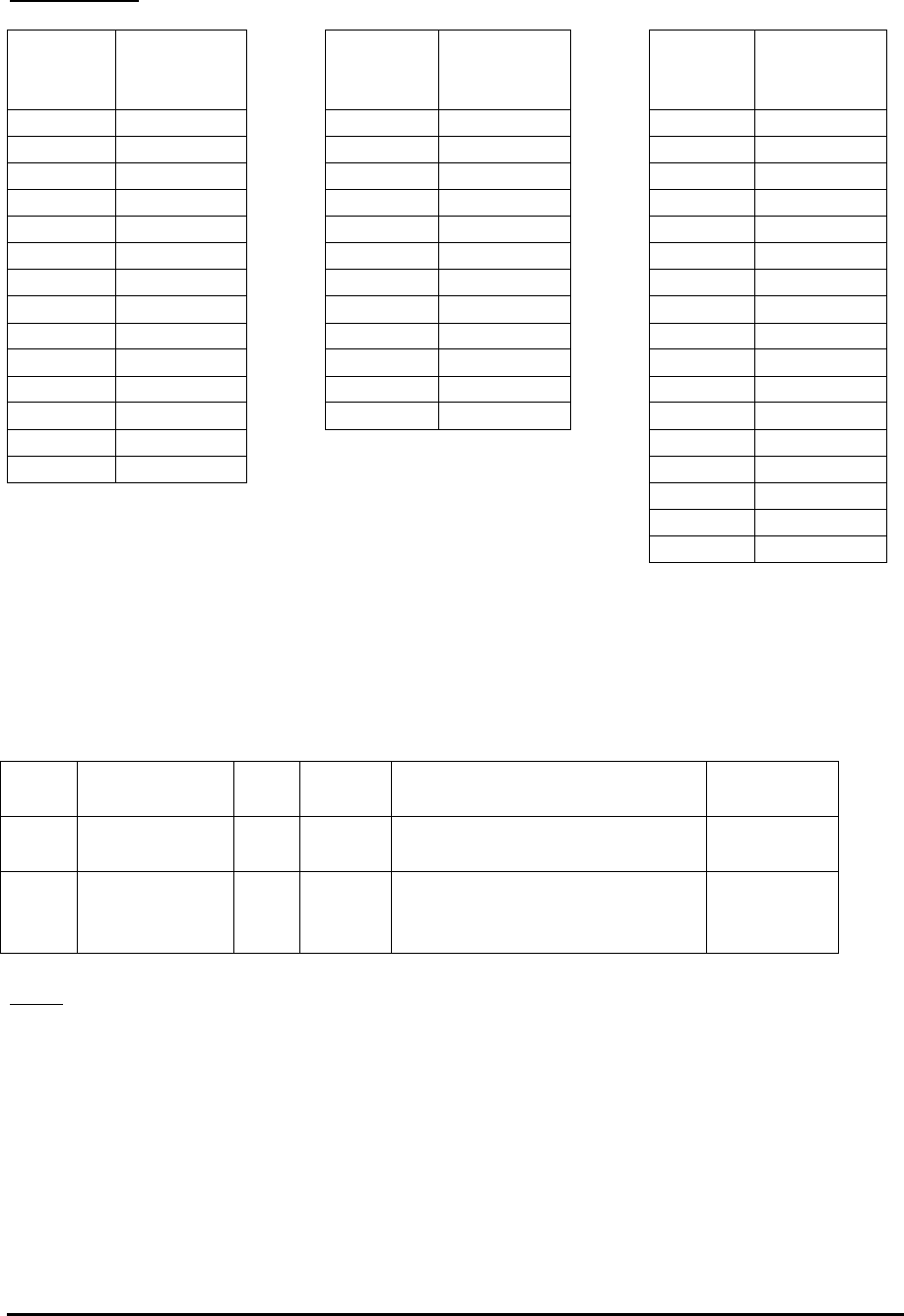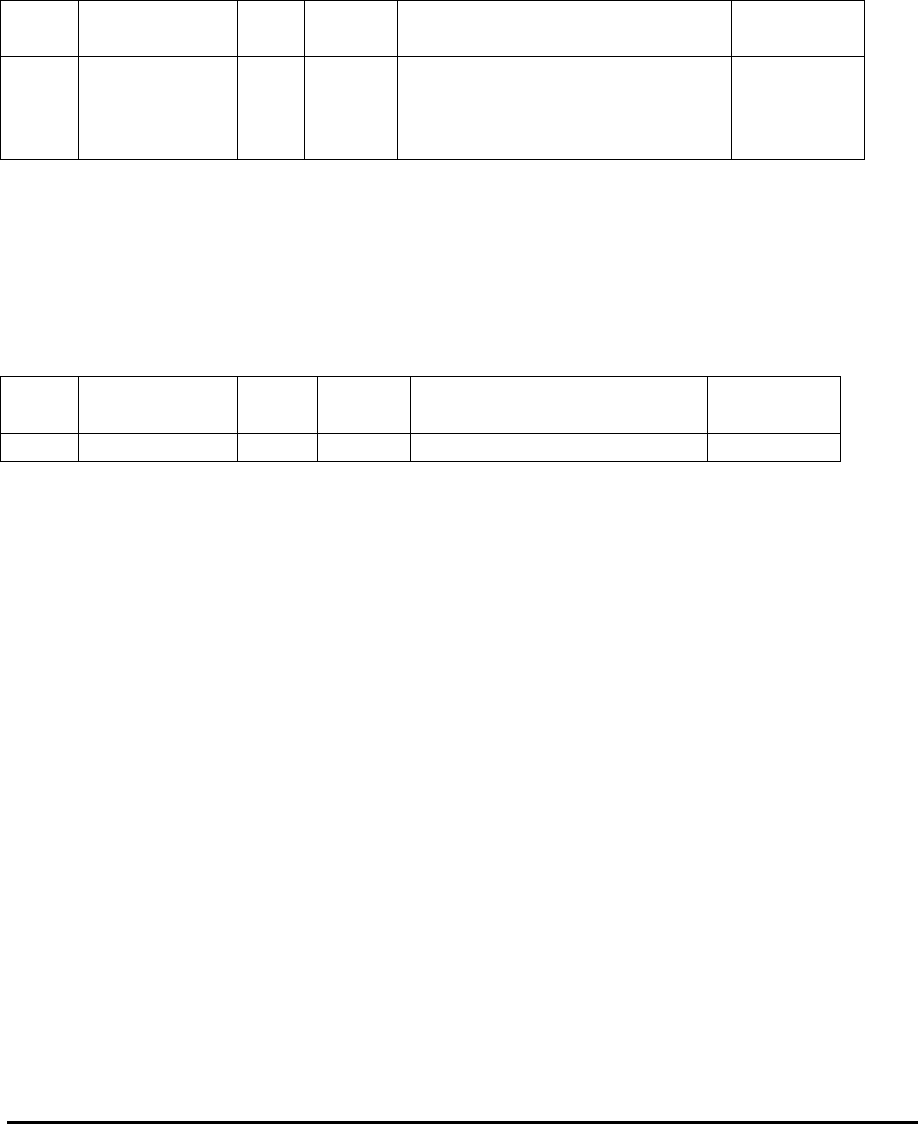GemTek Technology 940307AT Wireless Video Module-Transmitter User Manual WVM V1 10A
Gemtek Technology Co., Ltd. Wireless Video Module-Transmitter WVM V1 10A
Users Manual

ADIMOS ** Company Confidential **
WVM User Manual Page 1 of 12 Rev 1.10
Adimos Wireless Video Module
User Manual
The material contained herein is proprietary, privileged, and confidential.
No disclosure thereof shall be made to third parties without the express written
permission of ADIMOS.
ADIMOS reserves the right to alter the equipment specifications and descriptions in this
publication without prior notice. No part of this publication shall be deemed to be part of
any contract or warranty unless specifically incorporated by reference into such contract
or warranty.

ADIMOS ** Company Confidential **
WVM User Manual Page 2 of 12 Rev 1.10
Federal Communication Commission Interference Statement
This equipment has been tested and found to comply with the limits for a Class B digital device,
pursuant to Part 15 of the FCC Rules. These limits are designed to provide reasonable protection
against harmful interference in a residential installation. This equipment generates, uses and can
radiate radio frequency energy and, if not installed and used in accordance with the instructions,
may cause harmful interference to radio communications. However, there is no guarantee that
interference will not occur in a particular installation. If this equipment does cause harmful
interference to radio or television reception, which can be determined by turning the equipment off
and on, the user is encouraged to try to correct the interference by one of the following measures:
- Reorient or relocate the receiving antenna.
- Increase the separation between the equipment and receiver.
- Connect the equipment into an outlet on a circuit different from that to which the receiver is
connected.
- Consult the dealer or an experienced radio/TV technician for help.
This device complies with Part 15 of the FCC Rules. Operation is subject to the following two
conditions: (1) This device may not cause harmful interference, and (2) this device must accept
any interference received, including interference that may cause undesired operation.
FCC Caution: Any changes or modifications not expressly approved by the party responsible for
compliance could void the user's authority to operate this equipment.
IMPORTANT NOTE:
FCC Radiation Exposure Statement:
This equipment complies with FCC radiation exposure limits set forth for an uncontrolled
environment. This equipment should be installed and operated with minimum distance 20cm
between the radiator & your body.
NOTE:
The WVM1104-Tx ( FCC ID: MXF-940307AT ) is limited in CH1~CH11 for 2.4 GHz by
specified firmware controlled in U.S.A.
This device is intended only for OEM integrators under the following conditions:
1)The antenna must be installed such that 20 cm is maintained between the antenna and users, and
2)The antenna should be integral if the end device is intended to be operated in 5.15 ~ 5.25GHz frequency range.
As long as 2 conditions above are met, further transmitter test will not be required. However, the OEM integrator is still responsible for testing
their end-product for any additional compliance requirements required with this module installed (for example, digital device emissions, PC
peripheral requirements, etc.).
IMPORTANT NOTE: In the event that these conditions can not be met (for example certain laptop configurations or co-location with another
transmitter), then the FCC authorization is no longer considered valid and the FCC ID can not be used on the final product. In these
circumstances, the OEM integrator will be responsible for re-evaluating the end product (including the transmitter) and obtaining a separate
FCC authorization.
End Product Labeling
This transmitter module is authorized only for use in device where the antenna may be installed such that 20 cm may be maintained between the
antenna and users (for example: Connector Board…etc.). The final end product must be labeled in a visible area with the following: “Contains
TX FCC ID: MXF-940307AT”.
Manual Information That Must be Included
The OEM integrator has to be aware not to provide information to the end user regarding how to install or remove this RF module in the users
manual of the end product which integrate this module.
The users manual for OEM integrators end users must include the following information in a prominent location “ IMPORTANT NOTE: To
comply with FCC RF exposure compliance requirements, the antenna used for this transmitter must be installed to provide a separation distance
of at least 20 cm from all persons and must not be co-located or operating in conjunction with any other antenna or transmitter”.
The end product should include “The 5.15 to 5.35GHz band is restricted to indoor use only. Use of this product in outdoor could void the user’s
authority to operate this equipment.

ADIMOS ** Company Confidential **
WVM User Manual Page 3 of 12 Rev 1.10
Table of Contents
1. Introduction .............................................................................................................................................4
1.1 Purpose and Scope ............................................................................................................................4
1.2 Terms and Abbreviations...................................................................................................................4
2. References ................................................................................................................................................4
3. Configuration and Status Registers ....................................................................................................... 4
3.1 General Description ..........................................................................................................................4
3.2 Register Details .................................................................................................................................4
3.2.1 Introduction ...............................................................................................................................4
3.2.2 Register Summary .....................................................................................................................5
3.2.3 System Version..........................................................................................................................6
3.2.4 Video standard...........................................................................................................................6
3.2.5 Video input port.........................................................................................................................7
3.2.6 Video rate ..................................................................................................................................7
3.2.7 Country Code.............................................................................................................................8
3.2.8 WLAN channel..........................................................................................................................8
3.2.9 Operation mode – local unit ......................................................................................................9
3.2.10 Operation mode – remote unit.................................................................................................10
3.2.11 IR enable/disable .....................................................................................................................10
3.2.12 Discrete Inputs Status ..............................................................................................................10
3.2.13 Wireless ID..............................................................................................................................11
3.2.14 RSSI Status..............................................................................................................................11
3.2.15 PER Status ...............................................................................................................................11
3.2.16 Do Installation Process ............................................................................................................11
3.2.17 Discrete I/O Test Mode ...........................................................................................................12
3.2.18 Reset unit ................................................................................................................................. 12

ADIMOS ** Company Confidential **
WVM User Manual Page 4 of 12 Rev 1.10
1. Introduction
1.1 Purpose and Scope
The Wireless Video Module product (WVM) delivers video over wireless channel. It enables a wireless
connection between a video source (DVD, VCR, PVR, STB, BS or PC) and a video display (standard TV,
flat screen TV or video monitor).
This document guides the user how to configure the WVM via a set of configuration and status registers.
1.2 Terms and Abbreviations
BS Base Station
CPU A microprocessor or microcontroller device
DVD Digital Video Disk
MPEG Motion Picture Expert Group
N/A Not Applicable
PVR Personal Video Recorder
STB Set Top Box
VCR Video Cassette Recorder
WLAN Wireless Local Area Network
WVM Wireless Video Module
2. References
[1] Adimos WVM - Frequency Channel Tables
3. Configuration and Status Registers
3.1 General Description
The WVM provides a set of internal registers, which can be modified or read via I2C interface. The values
of these registers determine the behavior of the WVM. Each register has a unique sub-address.
3.2 Register Details
3.2.1 Introduction
This section describes the internal registers.
Byte order: Byte0 is the first byte in a read/write operation.
Bit order: Bit 7 is the most significant bit within a byte.
0x… is a hexadecimal number.

ADIMOS ** Company Confidential **
WVM User Manual Page 5 of 12 Rev 1.10
3.2.2 Register Summary
Sub-address
Name Side Read/
Write
Size
[bytes]
Function
0x00 System Version Tx, Rx R 4 System version ID
0x01 Set video standard Tx R/W 2 Set NTSC/PAL/SECAM/Auto.
0x02 Video standard status Tx, Rx R 1 Actual status of video standard
0x03 Select video input port Tx R/W 2 Select Composite-video, S-Video,
Component-video or Auto.
Applicable only to WVM1103.
0x04 Video input port status Tx, Rx R 1 Actual status of video input port.
Applicable only to WVM1103.
0x05 – 0x08 Reserved ---- ---- ----
0x09 Set video rate Tx R/W 2 Set video bit rate
0x0A Video rate status Tx, Rx R 1 Actual status of video bit rate
0x0B – 0x0F Reserved ---- ---- ----
0x10 Country Code Tx, Rx R/W 2 Set Country code for WLAN
0x11 Set WLAN channel Tx R/W 2 Set frequency channel for WLAN
0x12 WLAN channel status Tx, Rx R 2 Actual status of WLAN channel
0x13 Change operation mode Tx, Rx W 1 Change the operation mode at the local
unit
0x14 Operation mode status Tx, Rx R 1 Actual operation mode at the local unit
0x15 Reserved ---- ---- ----
0x16 Reserved ---- ---- ----
0x17 IR Enable/Disable Rx R/W 1 Enable/Disable the IR function
0x18 Reserved ---- ---- ----
0x19 Discrete Inputs status Rx R 1 Status of Discrete Inputs of the Tx
unit.
0x1A Wireless ID Rx R 16 Value of wireless ID string
0x1B RSSI status Tx, Rx R 1 Status of signal strength
0x1C – 0x1E
Reserved ---- ---- ----
0x1F PER status Tx, Rx R 1 Status of Packet Error Rate
0x20 Remote operation mode
change request
Tx, Rx W 1 Request a change of the operation
mode at the remote unit
0x21 Change request status Tx, Rx R 1 Status of change request
0x22 Do installation process Tx W 1 Initiate installation process
(Tx-Rx synchronization)
0x23 Discrete I/O test Tx, Rx R/E 1 Test mode for the Discrete I/O’s
0x24 – 0x50 Reserved ---- ---- ----
0x51 Reset unit Tx, Rx W 1 Unit reset command
Notes:
The Side column designates if the register is applicable to both Tx and Rx units, Tx only or Rx only.
The Read/Write column designates if the register is Read only (R), Read and Write (R/W) or Write only
(W).
The Size column designates the number of bytes in the register, e.g. 1, 2 or 4.

ADIMOS ** Company Confidential **
WVM User Manual Page 6 of 12 Rev 1.10
3.2.3 System Version
Sub-
addr
Name R/W Size
[bytes]
Value Default
0x00 System Version R 4 Byte0: V1
Byte1: V2
Byte2: V3
Byte3: V4
Byte values are 0-0xFF
N/A
The System version is presented as: V1.V2.V3.V4.
V1 – Product type
V2 – Major version ID
V3, V4 – Minor version ID
3.2.4 Video standard
Sub-
addr
Name R/W Size
[bytes]
Value Default
Byte0 = 1: NTSC
Byte0 = 2: PAL
Byte0 = 3: SECAM
Byte0 = 0xFF: N/A (only on Read)
1
(NTSC)
0x01 Set video
standard
(Tx only)
R/W 2
Byte1 = 0: Fixed
Byte1 = 1: Automatic (Byte0 is ignored)
Byte1 = 0xFF: N/A (only on Read)
1
(Automatic)
0x02 Video standard
status
R 1 Byte0 = 0: No video signal
Byte0 = 1: NTSC
Byte0 = 2: PAL
Byte0 = 3: SECAM
N/A
The video standard at the video input can be set to NTSC, PAL or SECAM, or can be set to Automatic.
When set to Automatic, the system will select automatically the appropriate video standard, according to the
actual input signal.
Writing to register 0x01 commands the system to a desired video standard.
Reading from register 0x02 presents the video standard that is currently active.

ADIMOS ** Company Confidential **
WVM User Manual Page 7 of 12 Rev 1.10
3.2.5 Video input port
Sub-
addr
Name R/W Size
[bytes]
Value Default
Byte0 = 1: Composite video
Byte0 = 2: S-Video
Byte0 = 3: YPbPr-interlaced video
Byte0 = 0xFF: N/A (only on Read)
1
(Composite
video)
0x03 Select video
input port
(Tx only)
R/W 2
Byte1 = 0: Fixed
Byte1 = 1: Automatic (Byte0 is ignored)
Byte1 = 0xFF: N/A (only on Read)
1
(Automatic)
0x04 Video input port
status
R 1 Byte0 = 0: No video signal
Byte0 = 1: Composite video
Byte0 = 2: S-Video
Byte0 = 3: YPbPr-interlaced video
N/A
The video input can be selected among YPbPr (component) input with interlaced video, S-Video and
Composite video, or set to Automatic.
When set to Automatic the Tx unit will perform automatic detection of a video signal in the following order
of precedence:
- YPbPr-interlaced video
- S-Video
- Composite Video.
Writing to register 0x03 commands the system to a desired video input port.
Reading from register 0x04 presents the video input port that is currently active.
Note: Register 0x03 and 0x04 are applicable only to WVM1103 model.
3.2.6 Video rate
Sub-
addr
Name R/W Size
[bytes]
Value Default
Byte0 = 1: 4 Mbps
Byte0 = 2: 8 Mbps
Byte0 = 3: 14 Mbps
Byte0 = 4-7: reserved
Byte0 = 0xFF: N/A (only on Read)
3
(14 Mbps)
0x09 Set video rate
(Tx only)
R/W 2
Byte1 = 0: Fixed rate
Byte1 = 1: Limited Automatic rate (up to
the rate set by Byte0)
Byte1 = 2: Fully Automatic rate (Byte0 is
ignored)
Byte1 = 0xFF: N/A (only on Read)
2
(Fully
Automatic)
0x0A Video rate
status
R 1 Byte0 = 0: No video transfer
Byte0 = 1: 4 Mbps
Byte0 = 2: 8 Mbps
Byte0 = 3: 14 Mbps
N/A

ADIMOS ** Company Confidential **
WVM User Manual Page 8 of 12 Rev 1.10
The video transmission rate can be set to 4, 8 or 14 Mbps, or can be set to Limited Automatic or Fully
Automatic.
When set to Limited Automatic, the system will select automatically the highest possible video rate, up to
the value set in Byte0 of register 0x09. This setting may be used when the user wants to limit the system to 4
or 8 Mbps only, without trying to go to 14 Mbps.
When set to Fully Automatic, the system will select automatically the highest possible video rate.
Writing a value to register 0x09 commands the system to a desired video rate.
Reading from register 0x0A presents the video rate currently used by the system (i.e., the fixed video rate set
by the user or the video rate selected automatically be the system).
3.2.7 Country Code
Sub-
addr
Name R/W Size
[bytes]
Value Factory
Setup
3.2.8 WLAN channel
Sub-
addr
Name R/W Size
[bytes]
Value Default
Byte0 = 1, 2, … : Index of a fixed
channel in the list of permitted
channels, according to configured
Country code.
Byte0 = 0xFF: N/A (only on Read)
1 0x11 Set WLAN channel
(Tx only)
R/W 2
Byte1 = 0: Fixed channel
Byte1 = 1: Automatic channel (Byte0
is ignored)
Byte1 = 0xFF: N/A (only on Read)
1
(Automatic)
Byte0 = Channel number, according to
Channel Table below, of actual
channel.
N/A
0x12 WLAN channel
status
R 2
Byte1 = Index of actual channel in the
list of permitted channels, according to
configured Country code.
N/A
The WLAN frequency channel can be set to one of the permitted channels, according to configured Country
code, or can be set to Automatic.
When set to Automatic, the system will select automatically the best available channel.
Writing to register 0x11 commands the system to a desired mode and channel.
Reading from register 0x12 presents the channel currently used by the system.
(This function is not available for US model)

ADIMOS ** Company Confidential **
WVM User Manual Page 9 of 12 Rev 1.10
Channel Table
Channel
Number
(Hex)
Channel
Frequency
(GHz)
Channel
Number
(Hex)
Channel
Frequency
(GHz)
Channel
Number
(Hex)
Channel
Frequency
(GHz)
01 2.412 22 5.170 64 5.500
02 2.417 24 5.180 68 5.520
03 2.422 26 5.190 6C 5.540
04 2.427 28 5.200 70 5.560
05 2.432 2A 5.210 74 5.580
06 2.437 2C 5.220 78 5.600
07 2.442 2E 5.230 7C 5.620
08 2.447 30 5.240 80 5.640
09 2.452 34 5.260 84 5.660
0A 2.457 38 5.280 88 5.680
0B 2.462 3C 5.300 8C 5.700
0C 2.467 40 5.320
0D 2.472 95 5.745
0E 2.484 99 5.765
9D 5.785
A1 5.805
A5 5.825
3.2.9 Operation mode – local unit
Sub-
addr
Name R/W Size
[bytes]
Value Default
0x13 Change
operation mode
W 1 Byte0 = 0: Enter Sleep mode
Byte0 = 1: Exit Sleep mode
N/A
0x14 Operation mode
status
R 1 Byte0 = 0: Sleep mode
Byte0 = 1: Idle mode
Byte0 = 2: Work mode
N/A
Notes:
Enter Sleep Mode command is applicable only when the unit is in Idle or Work mode. Entering Sleep
mode stops any video and audio transfer.
Exit Sleep Mode command is applicable only when the unit is in Sleep mode. The unit will switch to
Idle mode.

ADIMOS ** Company Confidential **
WVM User Manual Page 10 of 12 Rev 1.10
3.2.10 Operation mode – remote unit
Sub-
addr
Name R/W Size
[bytes]
Value Default
0x20 Remote
operation mode
change request
W 1 Byte0 = 0: Request to enter Sleep
mode on the remote unit
Byte0 = 1: Request to exit Sleep
mode on the remote unit
N/A
0x21 Change request
status
R 1 Byte0 = 0: Success of change request
Byte0 = 1: Failure of change request
Byte0 = 2: Request in progress
N/A
Notes:
Enter Sleep mode request is applicable only when the remote unit is in Idle or Work mode. Entering
Sleep mode stops any video and audio transfer.
Exit Sleep mode request is applicable only when the remote unit is in Sleep mode. The unit will switch
to Idle mode.
Register 0x21 shows the status of the last change request.
When the request is in progress, the register will be set to 2.
In case of failure in executing the command (e.g., the remote unit is off), the register will be set to 1. It
may take approximately 1 sec. to set the register to Failure value.
In case of successful execution the register will be set to 0.
The Success/Failure condition will remain set until the next request will start.
3.2.11 IR enable/disable
Sub-
addr
Name R/W Size
[bytes]
Value Default
0x17 IR
Enable/Disable
(Rx only)
R/W 1 Byte0 = 0: Disabled
Byte0 = 1: Enabled
Byte0 = 0xFF: N/A (only on Read)
1
(Enabled)
The IR function can be enabled or disabled.
3.2.12 Discrete Inputs Status
Sub-
addr
Name R/W Size
[bytes]
Value Default
0x19 Discrete Inputs
Status
(Rx only)
R 1 Byte0 = 0-7: Status of Discrete
Input 1, 2, 3 at the Tx unit.
Bit 0 is 1 when Discrete Input 1
is low; bit 1 corresponds to
Discrete Input 2 and bit 3
corresponds to Discrete Input 3.
N/A
The Discrete Inputs Status is updated when there is a change in the input status at the Tx unit.

ADIMOS ** Company Confidential **
WVM User Manual Page 11 of 12 Rev 1.10
3.2.13 Wireless ID
Sub-
addr
Name R/W Size
[bytes]
Value Default
0x1A Wireless ID
(Rx only)
R 16 Byte0-15 = Value of wireless ID
string.
N/A
The Wireless ID string is a 128-bits (16-bytes) string, which identifies the Rx unit. It is used for
communicating to the Rx unit from a PC equipped with Adimos PC Connectivity product.
3.2.14 RSSI Status
Sub-
addr
Name R/W Size
[bytes]
Value Default
0x1B RSSI status R 1 Byte0 = 0-0x46 (0-70): RSSI in
dB units
N/A
RSSI is an acronym for Received Signal Strength Indication. The RSSI value measures the signal relative to
a calibrated noise floor. The noise floor is measured over the relevant bandwidth over a long time, and the
minimum value establishes the calibrated noise floor.
The RSSI on the Rx side relates to the video stream direction; the RSSI on the Tx side relates to the
Acknowledge packets direction.
The RSSI is updated every 100 mSec.
3.2.15 PER Status
Sub-
addr
Name R/W Size
[bytes]
Value Default
0x1F PER status R 1 Byte0 = 0-0xC7 (0-199): PER in
0.5% units (e.g., 2 means PER of
1%)
Byte0 = 0xC8 (200): the unit is not
connected to a peer unit.
N/A
PER is an acronym for Packet Error Rate. While in video transmission, the PER is measured and updated at
the Tx unit every 300 mSec.
Special values of the PER status register:
When the unit is not connected, waiting for a peer unit to connect, PER status register is 200.
When the unit is in sleep mode and connected to a peer unit, PER status register is 0.
3.2.16 Do Installation Process
Sub-
addr
Name R/W Size
[bytes]
Value Default
0x22 Do Installation
Process
(Tx only)
W 1 Byte0 = 1: Do normal installation
process
Byte0 = 2: Do temporary installation
process
N/A

ADIMOS ** Company Confidential **
WVM User Manual Page 12 of 12 Rev 1.10
The Installation Process is required for sending MAC and Wireless ID parameters from a Tx unit to a Rx
unit. After the two units are “synchronized”, video/audio transfer can be done.
The normal installation process writes the Tx details in the Rx, in a list of recognized Tx units. (The Normal
process is usually done by pressing the Installation button at the Tx unit).
The temporary installation process is for testing while in production. The Rx writes the Tx details in the list
of recognized Tx units, but deletes the details when the Tx-Rx wireless link is cut off.
3.2.17 Discrete I/O Test Mode
Sub-
addr
Name R/W Size
[bytes]
Value Default
0x23 Discrete I/O
Test
R/W 1 Byte0 = 0: Normal operation of the
Discrete I/O port
Byte0 = 1: Enter Discrete I/O test
mode
0
(Normal
operation)
The Discrete I/O Test Mode is required for production testing of Tx and Rx units.
When in Discrete I/O test mode, the 4 LEDs (pin 1, 2, 3, 4 of the Discrete I/O port) are turned on.
When pin 5, 6, 7 or 8 of the Discrete I/O port is shorted to GND, the LED of pin 1, 2, 3 or 4, respectively, is
turned off. All 4 input pins can be shorted to GND in any combination.
3.2.18 Reset unit
Sub-
addr
Name R/W Size
[bytes]
Value Default
0x51 Reset unit W 1 Byte0 = 1: Reset unit N/A
Writing 1 to register 0x51 will cause the WVM to reset and restart into Idle mode.